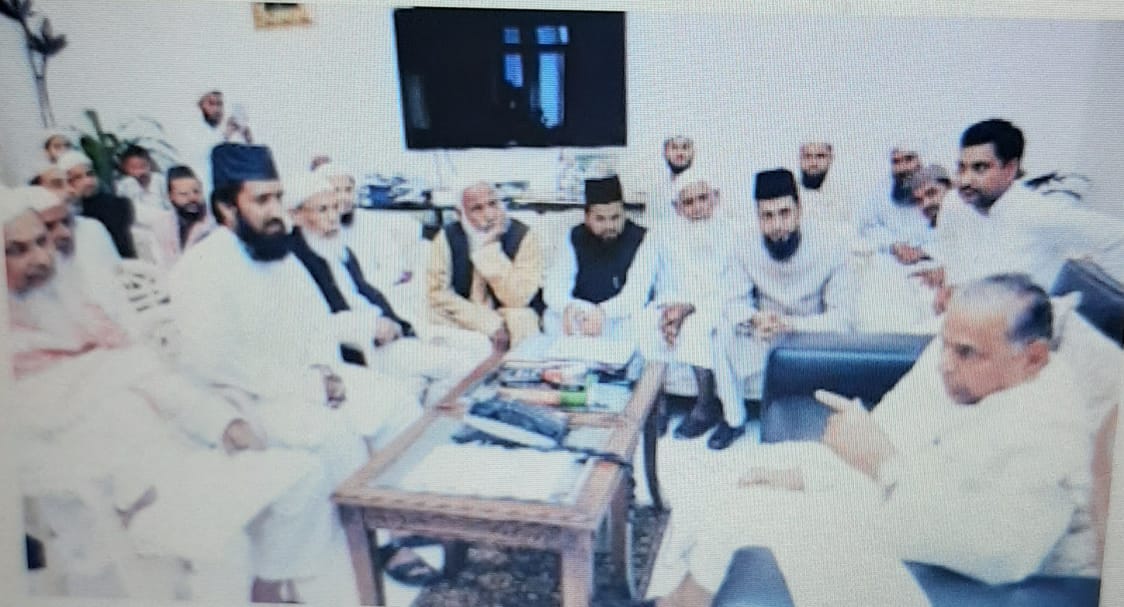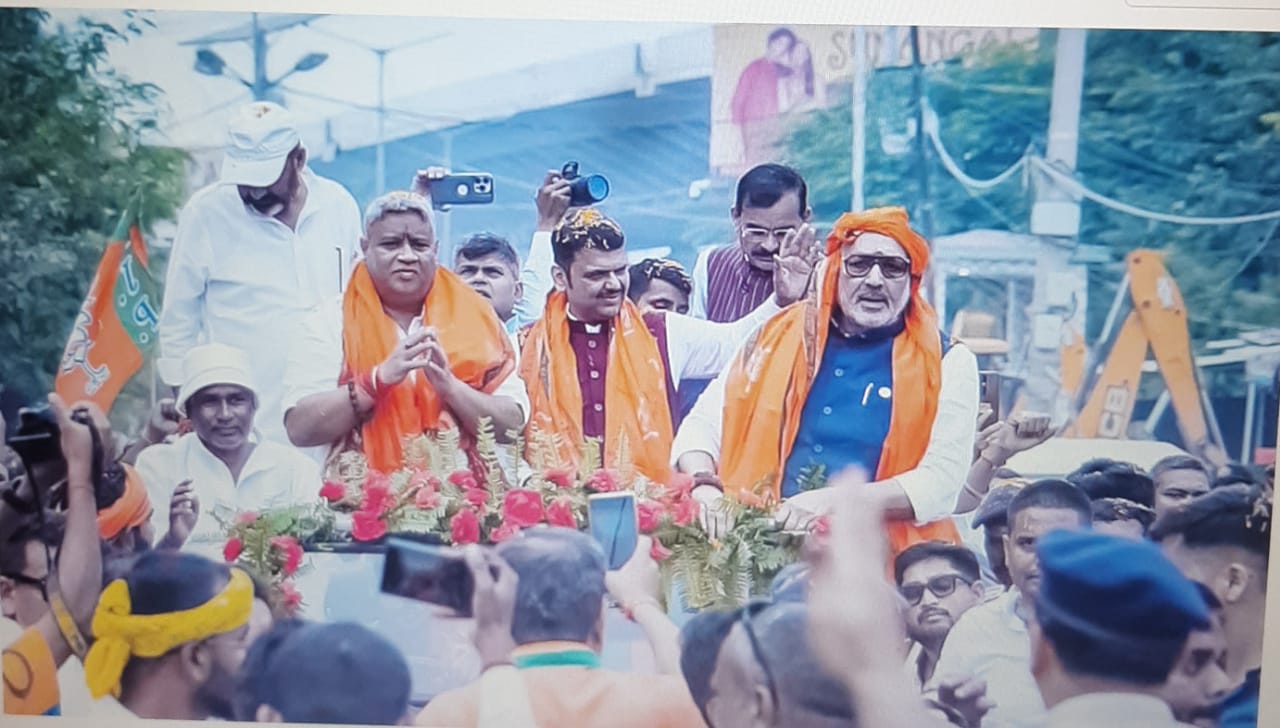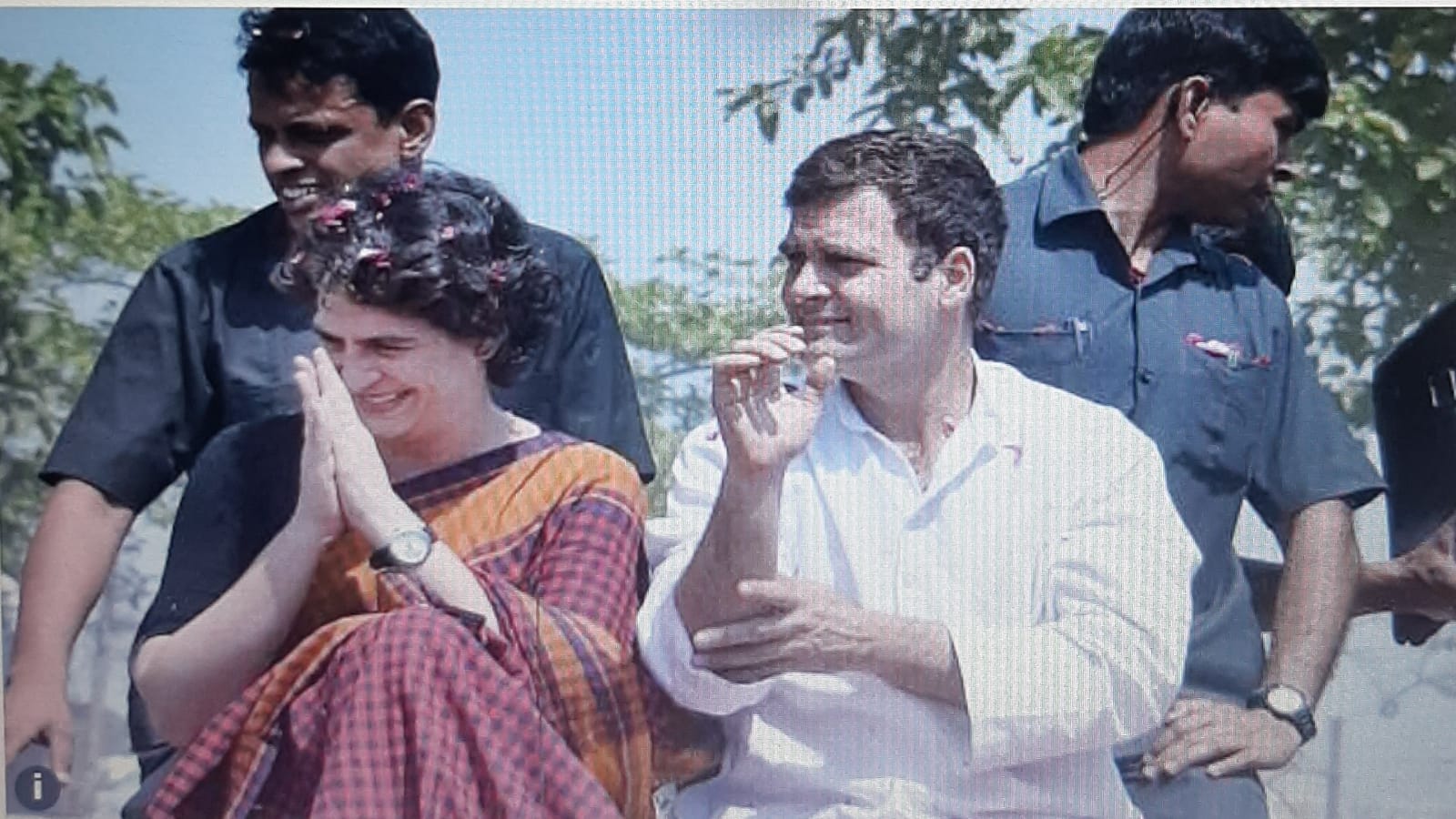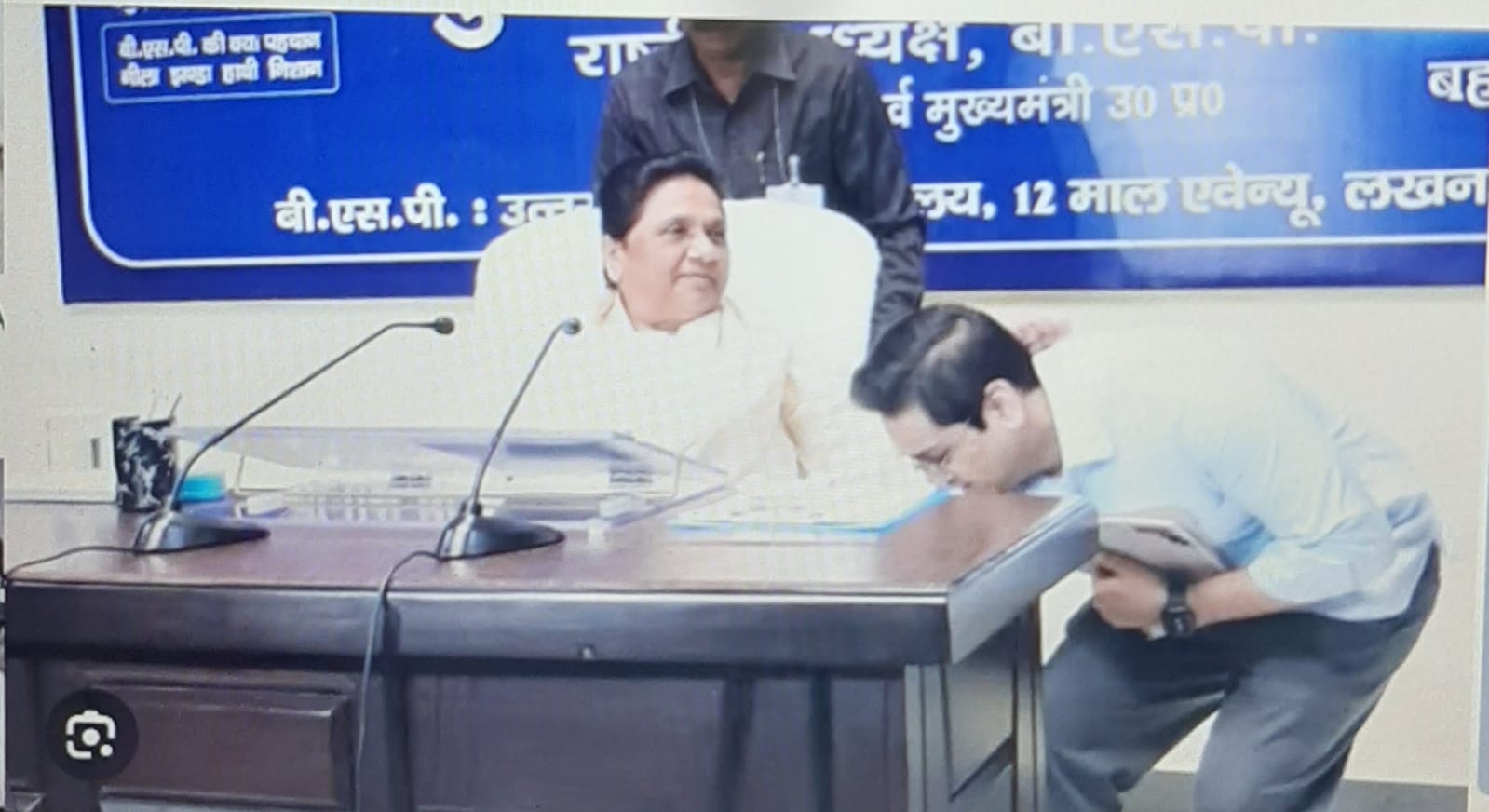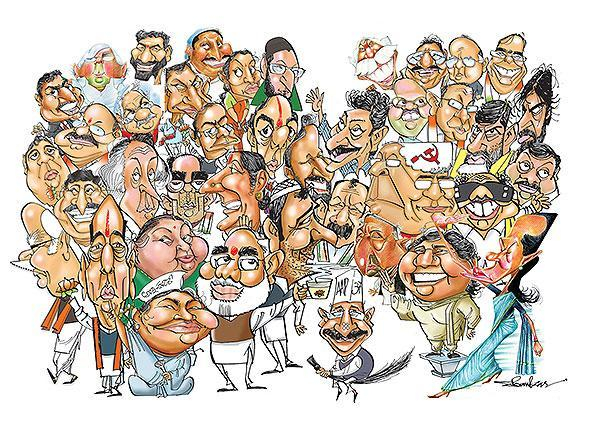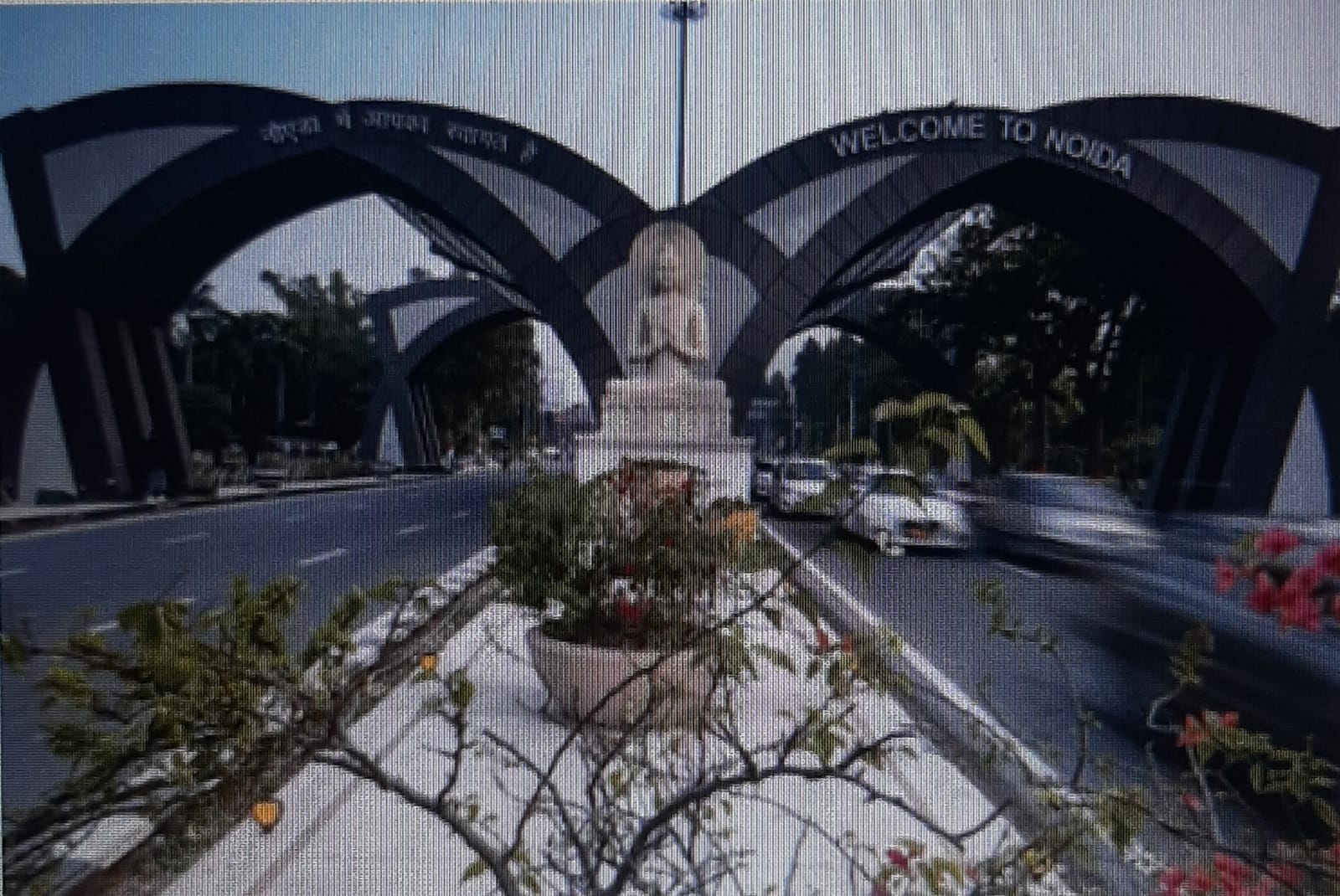
The ‘builder-politician-bureaucrat’ nexus is too well established and entrenched and need no reiteration. One CEO and Additional CEO of Noida have been sentenced and served imprisonment in a corruption case; several other officials, including engineers, are in prison and facing inquiry by CBI, ED and other investigating agencies, writes former IAS officer Sunil Kumar
‘NOIDA @ 50’ signages greet visitors as one crosses the Yamuna from Delhi and enters Noida in Uttar Pradesh. Not many know exactly what this denotes. Most youngsters would look upon it as a variation on ‘I LOVE DELHI’ or similar signages that have come to dot the cityscape in last ten years and become favourite ‘selfie’ points. Actually, this refers to the commencement of the 50th year celebration of New Okhla Industrial Development Authority (Noida). But is it cause for celebration by residents of Noida too? This remains an open question.
NOIDA was constituted in 1976 under the Uttar Pradesh Industrial Area Development Act, 1976 as an industrial township reportedly at the behest of late Sanjay Gandhi who wanted to shift polluting industries from Delhi to the outskirts as part of his beautification drive launched during the Emergency. Today Noida has grown into a bustling hub of over one million people covering 81 revenue villages and about 20,136 hectares of land[i]. Noida was followed by the setting up of Gorakhpur Industrial Development Authority (GIDA) in 1989, Greater Noida in 1991, Yamuna Expressway Industrial Development Authority (YEIDA) and Uttar Pradesh Expressway Industrial Development Authority (UPEIDA) in 2007 and Bundelkhand Industrial Development Authority (BIDA) in 2020. Recently the State Government has approved the New Noida Master Plan 2041 and the Greater Noida Master Plan 2041 which will significantly expand the area under both Noida and Greater Noida.
On August 13, 2025, a Supreme Court bench of Justices Surya Kant and Joymalya Bagchi directed the Government of Uttar Pradesh to consider converting Noida into a Municipal Corporation to ensure citizen-centric governance as this was the only major Indian city to not have an elected local government[ii]. This direction came during the course of hearing of a bail plea by two Noida Authority officials accused of authorising excess compensation payments exceeding ₹12 crore in 2021. The Court accepted the report of the three-member Committee led by the then UP Additional Director General of Police (ADGP) SB Shirodkar to find out if more such cases exist and to propose reforms. How this episode will play out remains to be seen as Noida, Greater Noida and now Yeida reflect a complex interplay of political, bureaucratic and commercial / industrial interests.
It is widely accepted that although designated as an ‘industrial township’, Noida has developed more as a residential and commercial hub than an industrial town. Just about 18.37% of total area of Noida is being used for industrial activities and over 37.45% is for residential use[iii]. There is no single ‘mother’ industry around which the city has grown. There is severe shortage of affordable housing for workers and daily wage labourers. An industrial township would have been expected to prioritise suitable accommodation for workers and labourers as was the case with industrial townships like Jamshedpur or Bokaro established earlier in other States.
In the last thirty years, Noida has attracted some major electronics industry players like Samsung, LG etc. But majorly it has emerged as the fourth largest centre for IT exports and TCS, Infosys, HCL, Wipro and others have major presence in Noida and Greater Noida. The opening of international airport at Jewar in Yeida later this year is likely to transform this area into a major logistics hub. All these developments make real estate the booming sector.
The ‘builder-politician-bureaucrat’ nexus is too well established and entrenched and need no reiteration. One CEO and Additional CEO of Noida have been sentenced and served imprisonment in a corruption case; several other officials, including engineers, are in prison and facing inquiry by CBI, ED and other investigating agencies. Most of these investigations over the years (especially since 1990s) have been ordered by the High Court or the Supreme Court. The CAG has also routinely flagged blatant violations of established norms by the officials of Noida & Greater Noida.
Another development that must be borne in mind is the passage of the 73rd and 74th Constitution Amendment Act (CAA) by the Parliament in 1992 and their coming into force in 1993. Apart from the union government and the state government, local governments in rural and urban areas are now part of the constitutional scheme of things. State governments were expected to bring all existing state laws into conformity with the constitutional provisions within one year of the 73rd and 74th CAA coming into force. Most State Governments, including Uttar Pradesh, took this to mean amendments in just their Panchayat and Municipal Acts and Rules. Only Kerala undertook a review of all State Acts and suitably amended all of them to bring them in conformity with the 73rd and 74th CAA.
In a State like Uttar Pradesh, apart from the Panchayat & Municipal Acts & Rules, the Industrial Area Development Act, 1976 should also have been suitably amended. Instead what we find is that through Sec. 2 of State Act 4 of 2001, Section 12A has been inserted in the said Act of 1976 which stipulates that existing Gram Panchayats would cease to exist once they are notified. Likewise, through Sec. 7 of State Act 10 of 2016, Sec.12 B was inserted which provides that even a Municipality would cease to exist if it were to be notified to be an Industrial Township under the proviso to clause (1) of Article 243Q of the Constitution. It is obvious that successive Governments in Uttar Pradesh have taken the legislative route to thwart the spirit of both 73rd and 74th CAA.
Transparency, accountability and responsiveness are hallmark of citizen-centric governance. All three are missing in the Uttar Pradesh Industrial Area Development Act, 1976. This Act was passed during the Emergency when the opposition leaders were behind bars and well before 1993 when 73rd and 74th CAA came into effect. Since there are no elected representatives, voice of citizens cannot be raised in appropriate forums. The budget is prepared by bureaucrats and no budgetary details are available on any public forum. No wonder, these create ideal conditions for whimsical and opaque functioning wherein corrupt officials can act with impunity provided they have the blessings of top bureaucrats in the Industrial Development Department and political functionaries of the ruling party.
Thus, the real issue is the complete lack of attention to putting in place a democratic, accountable governance structure in these ‘industrial townships’. Existing NOIDA model is a classic example of a bureaucratic organization with the Chief Executive Officer functioning as a modern day ‘Zamindar’. The Board of Directors and the Authority comprise wholly of bureaucrats and there is virtually no place for any elected representative – not even the MP and/or MLA. This is a regression even from the Uttar Pradesh Urban Planning and Development Act, 1973 which led to the creation of Development Authorities in major cities and towns of Uttar Pradesh which had provision for constitution of an Advisory Council wherein local MP and MLA and those MPs of Rajya Sabha and Legislative Council, whose notified residence happened to be in the Development Area, were members. Further, even though the local Municipal Corporation or Municipality had no say in the affairs of the Development Authority, residents of the area notified under the Development Authority were not denied their right to vote and elect the councillor in elections to urban local governments. Further, once development work was completed, the area was to be transferred to the concerned Municipal Corporation or the Municipality. It is another matter that the State Government has not formulated any uniform policy or notified any rules in this regard and areas developed by Development Authorities continue to be managed by them long after completion of all development works. The Uttar Pradesh Industrial Area Development Act, 1976 has no such pretence.
Undertaking civic functions was never intended to be the job of a development authority or industrial development authority. But through State Act 10 of 2016, now the Authorities have been authorised to undertake ‘civic functions’ which are supposed to be the exclusive domain of local governments. States have created a host of parastatal organizations which intrude into the functions of local government.
These anomalous situations are increasingly coming to the fore. Setting up of Citizen Advisory Boards, as suggested by the Supreme Court, is likely to remain on paper and meet the same fate as Resident Welfare Associations (RWAs) that abound in societies and are more of a nuisance than of any help to residents. Giving financial and administrative powers to these ‘extra-legal’ institutions (or neighbourhood councils tried out in Noida in early 2000s) by the State government or the Authority is only going to muddy waters rather than bring about any fundamental change in the working of the Authority. Likewise, nomination of citizens on the Board of Noida, Greater Noida or Yeida is also not going to help as they would have limited role in setting the agenda or getting works approved since the Board is dominated by bureaucrats.
Even if one were to look at those industrial development authorities such as Noida (which came into being prior to 1993) as legally valid, there can be no justification for extending their boundaries, setting up new industrial development authorities under the said State Act of 1976 post 1993. The amendments carried out through State Act 4 of 2001 and State Act 10 of 2016 using the exception clause (1) of Article 243Q violate the constitution in letter and spirit. This point must be challenged in the Supreme Court and settled without any further delay especially as a two Judge bench of the Allahabad High Court has reportedly upheld the insertion of Sec.12A in the said Act. Otherwise, the direction of the Supreme Court to the Chief Secretary to put up the issue of establishing a Municipal Corporation in Noida for providing citizen-centric governance to the State Cabinet is likely to be ignored.
For providing citizen-centric governance, it is imperative that well designed institutions are put in place. The optimal size of a Municipal Corporation, both in terms of population and area, would also need to be factored in. A legal and objective roadmap for transitioning of rural to urban local governments would need to be put in place. States would need to establish an independent Delimitation Commission to not only draw the boundaries of electoral constituencies but also recommend transition of rural to urban local governments based on fulfilment of objective criteria and taking into account the wish of local residents. Right now, creation and abolition of rural and urban local governments is done arbitrarily by most state governments except Kerala and Karnataka which have provision for State Delimitation Commissions in their Panchayat and Municipal Acts.
Without governance reforms in these industrial townships, the situation is likely to get worse. Government of Uttar Pradesh is in the process of setting up several new industrial townships in the near future. Citizens of these notified areas would first lose their Panchayats and then would not get the Municipality or Municipal Corporation which Article 243Q promised. In my view, not only is Section 12A & 12B of UPIADA, 1976 violative of the spirit of Article 243 and Part IX and Part IXA of the Constitution but the entire Act needs to be looked afresh and appropriate governance structures put in place which provide citizens the right to vote and exercise control over the executive and makes the local government an accountable, transparent and responsive institution. A case in point is the establishment of Bokaro Steel City Municipal Corporation in 2017 in Jharkhand to oversee the city’s civic administration, infrastructure development and public services.
Since local government is a State subject, there is considerable scope before the States to study the best practices and adapt them in suitable state legislation to set up strong, effective, transparent and accountable local governments focused on providing citizen-centric governance. Leaders need to display political will and use this opportunity and time to address the design flaws in existing local governments and bring about suitable legislations. Providing good governance is the job of the executive and not the judiciary. Time to act is now.
(Sunil Kumar is a member of Pune International Centre and a former civil servant. Views expressed are personal.)
[i] A Metropolitan Corporation for Noida: Why SC suggested Change; The Indian Express, Saturday, 1 August16, 2025; explained@indianexpress.com
[ii] https://www.hindustantimes.com/cities/noida-news/supreme-court-orders-probe-into-noida-land-compensationpayouts-101755112801794.html
[iii] At 50, Noida doesn’t know what it wants to be—cosmopolitan city or industrial utopia; The Print, 23 June, 2025; https://theprint.in/ground-reports/at-50-noida-cosmopolitan-city-commercial-centre-industrial-utopia/2666905/



